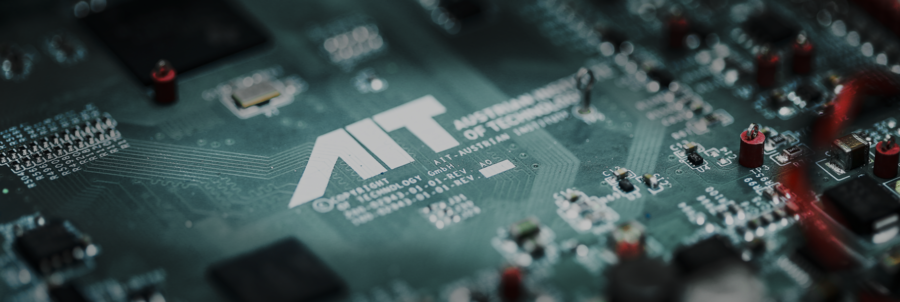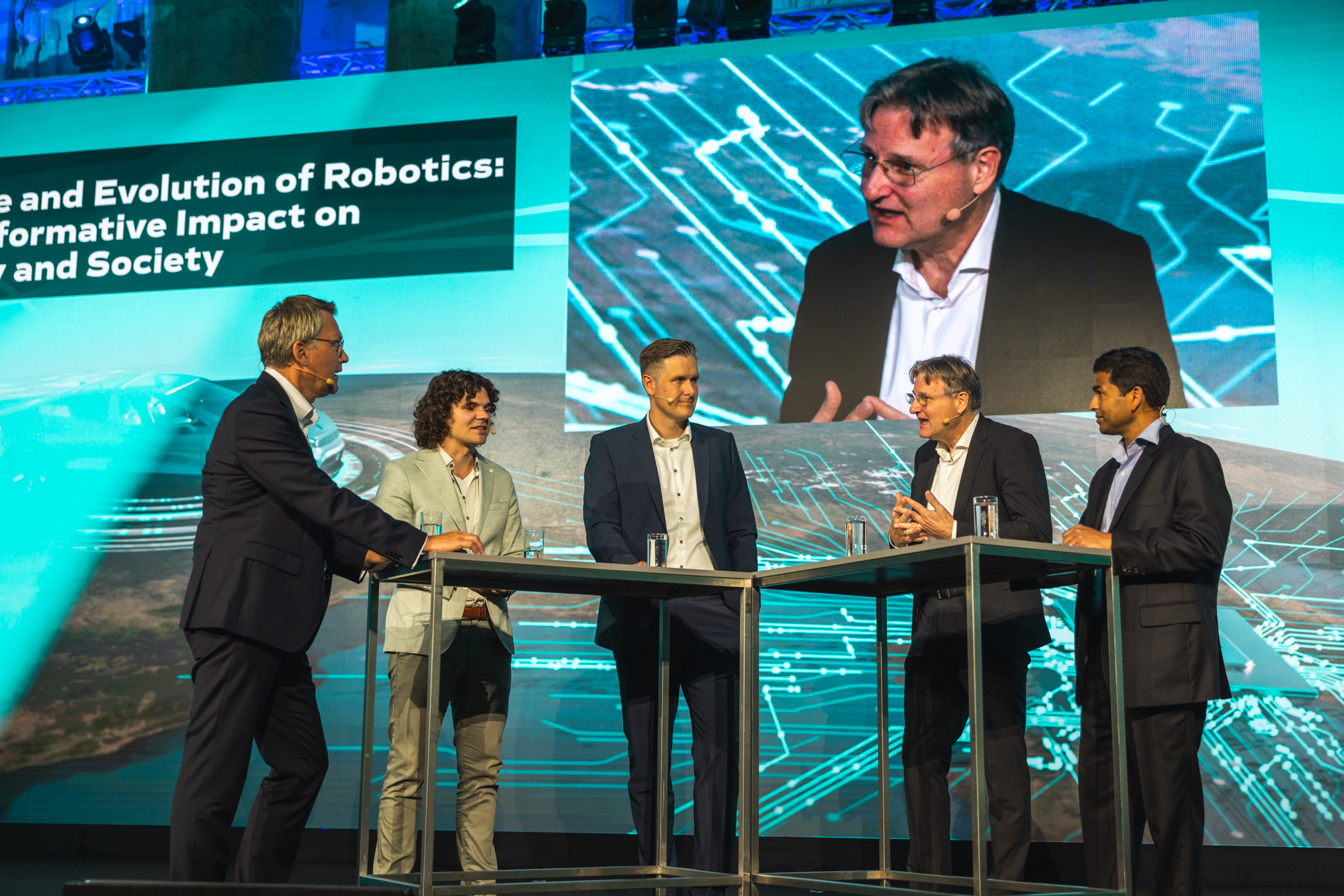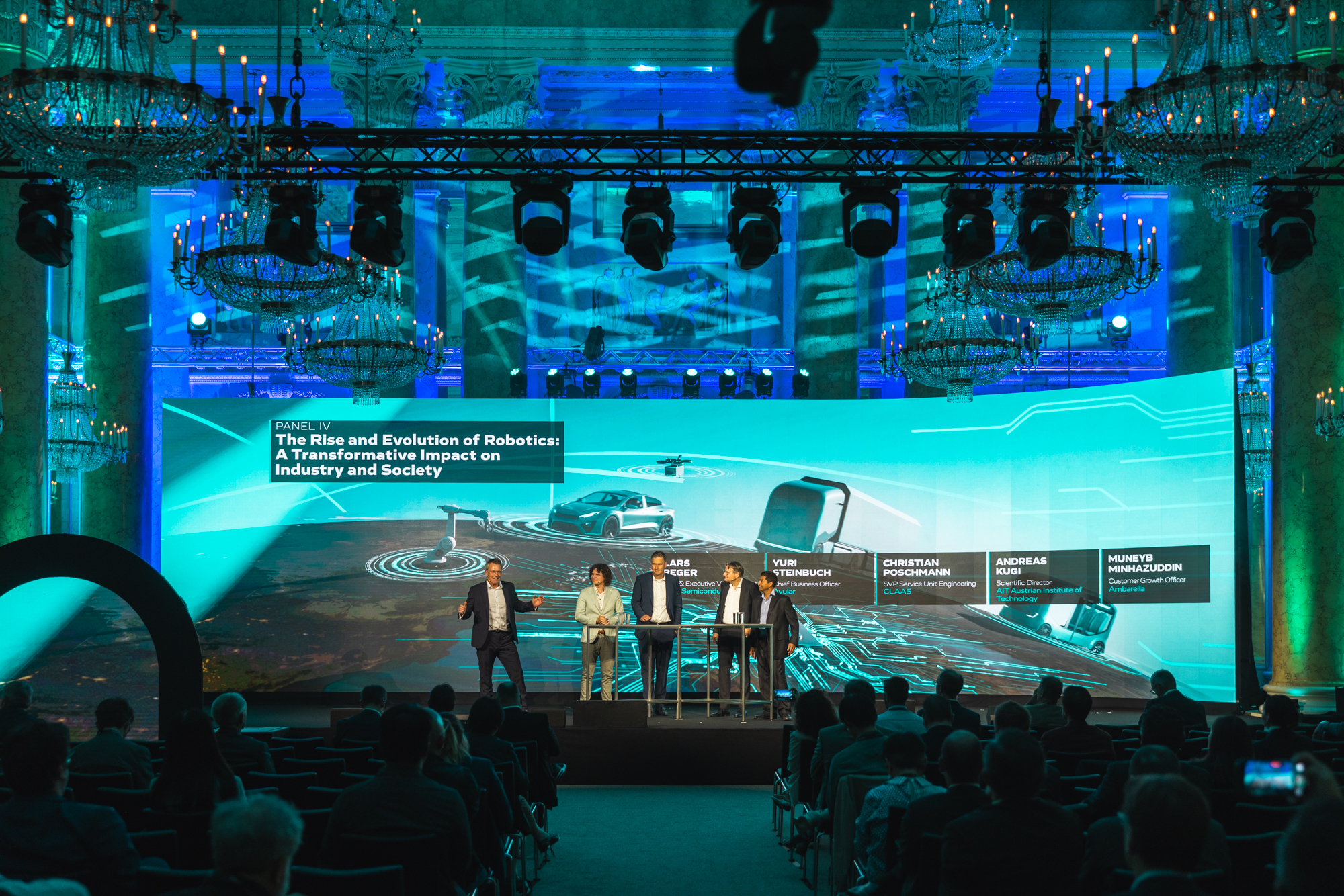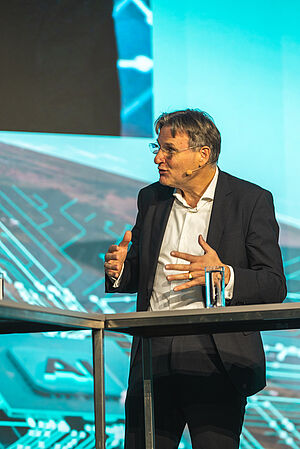Copyright: Christian Steinbrenner
On September 18, 2025, Vienna hosted the international flagship conference on autonomous mobility, The Autonomous Main Event. Under the motto “Making a Real-World Impact: Safe and Secure Software-Defined Autonomy”, this year’s event placed, among other key topics, a special focus for the first time on robotics and its role in industry and society.
In Panel IV: “The Rise and Evolution of Robotics: A Transformative Impact on Industry and Society”, experts from NXP Semiconductors, Avular, Claas, Ambarella, and Andreas Kugi, Scientific Director of the AIT Austrian Institute of Technology, discussed the future of robotics. Applications in aviation, agriculture, logistics, and forestry were highlighted, along with new forms of human-machine collaboration and technical concepts to improve autonomy.
Societal acceptance and human-centered technology
Kugi referred to the robotics research being conducted at AIT, as well as the development of autonomous work machines. He emphasized that safety and transparency must always be given top priority when developing such systems: "Only when we make it transparent how autonomous systems operate can we build trust. And trust is the basis for societal acceptance.”
Cognitive robotic systems will increasingly take over tasks in the future, but in many fields – such as construction sites – they will continue to work side by side with humans. In this context, human-machine interfaces play a key role: they enable intuitive operation, provide clear feedback, and are essential for user acceptance. Equally important, according to Kugi, are responsibility, liability, and ethical frameworks to ensure broad societal support for autonomous systems.
With its Large-Scale Robotics Lab and Center for Technology Experience AIT offers ideal conditions to develop and test autonomous work machines in realistic scenarios. Current projects include an autonomous forklift for outdoor logistics and an autonomous timber loading crane for forestry.
Technical requirements: Safety and reliability
Autonomous work machines face a variety of complex challenges: unstructured environments, changing light and weather conditions, obstructions, or sensor failures. To handle these, systems require semantic understanding of their environment, precise real-time motion planning under uncertainty, and robust generalization beyond training data – which remains one of the biggest challenges today.
Kugi stressed that end-to-end learning methods alone are not sufficient, despite impressive recent advances with vision-language-action models: “We need a modular architecture that embeds reliability and safety from the start – by combining data-driven methods with model-based engineering, classical control theory, proven safety concepts, and domain-specific expertise.”
Copyright: Christian Steinbrenner
Vision for the next ten years
According to Kugi, machine design raises the fundamental question of whether traditional designs – originally developed for manual operation – are still fit for purpose today. A more effective approach is to align the design, sensor systems, actuators, and overall system architecture with autonomous functions right from the start. Just as data must be “AI-ready,” machines must be conceived and built to be “autonomous-operation-ready.” Safety and reliability can only be guaranteed when the cognitive layers of software are seamlessly integrated with the hardware.
Since safety in edge cases remains a challenge, today’s systems are generally not yet fully autonomous. They often operate with variable autonomy, are teleoperated, or share responsibility with humans. At the same time, intelligent assistance systems are becoming increasingly prevalent and are already easing human workloads and paving the way toward full autonomy.





